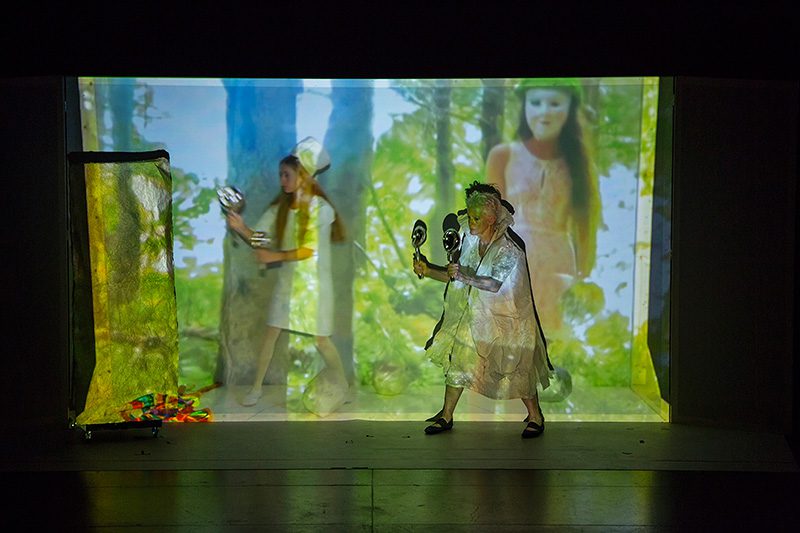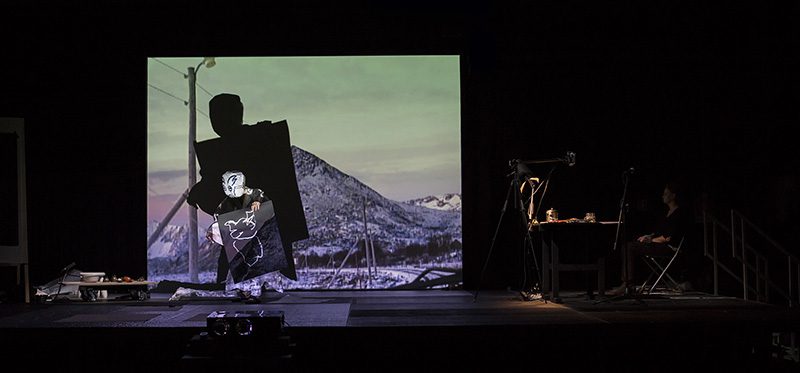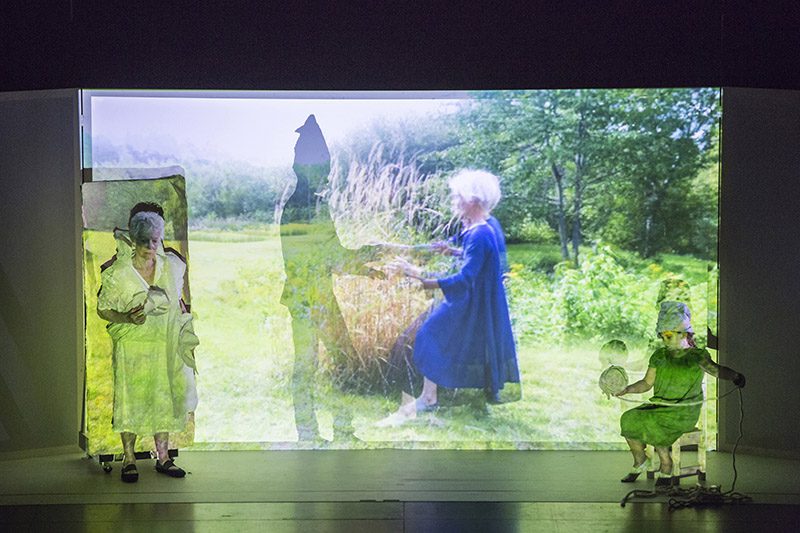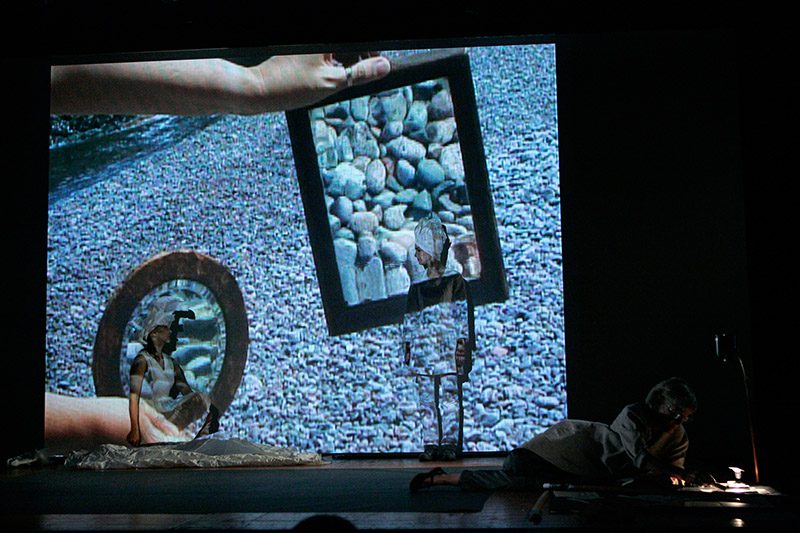ART-PRESENTATION: Joan Jonas-Stream or River, Flight or Pattern
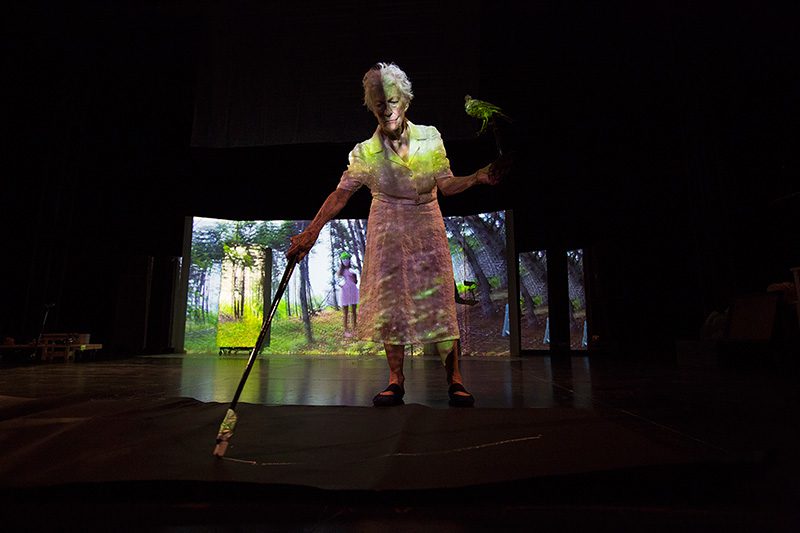 The encounter of Joan Jonas with the work of Claes Oldenburg, Yvonne Rainer and Simone Forti, convinced her to expand her artistic practice and stage actions, in which she soon became a main protagonist. While sculpture and drawing have continued to be essential in the work of Joan Jonas, performance enabled her to add sound and the spatiotemporal dimension, something that also enabled her to refer to film as much as to dance and theatre.
The encounter of Joan Jonas with the work of Claes Oldenburg, Yvonne Rainer and Simone Forti, convinced her to expand her artistic practice and stage actions, in which she soon became a main protagonist. While sculpture and drawing have continued to be essential in the work of Joan Jonas, performance enabled her to add sound and the spatiotemporal dimension, something that also enabled her to refer to film as much as to dance and theatre.
By Efi Michalarou
Photo: Fundación Botín Archive
The exhibition “Stream or river, flight or pattern” at Fundación Botín in Santander showcases the pioneering practice of Joan Jonas across performance, experimental film and video-installation. At the core of the exhibition is a new multimedia site specific installation in collaboration with 15 international young artists Joan Jonas has selected to participate in the three-week workshop she directed at Fundación Botín’s Villa Iris (6-24/6/16). In this new work, the artist further explores the complex relationship of human beings with nature and the environment, a constant concern throughout her long-standing practice. The presentation of this new work is complemented by a selection of films related to 5 important performances the artist has staged in the past 15 years: “Lines in the Sand” (2002), “The Shape, The Scent, The Feel of Things” (2004-2006), “Reading Dante” (2007-2010), “Reanimation” (2012) and “They Come to Us without a Word” (2015), with this work, she represented the USA at the Venice Biennale, where she received a special mention from the jury. Says the artist: “Performance is the medium I use to construct an object that only exists in time, and which is worked out in space with bodies, with my body. Performance for me is three-dimensional live poetry in space”. These works offer the visitor a rich perspective on the performance work of this prominent figure of the New York Avant-Garde of the late ‘60s and early ‘70s and key protagonist of Performance Art. Interested in exploring other cultures and their rituals, as well as the origin of Western culture, the artist travelled to Crete in 1966, where she was the witness of a traditional wedding ceremony. She soon after attended a Hopi Snake Dance in the American Southwest. Both had a tremendous effect on her. In 1970, she took a trip to Japan and became acquainted with Kabuki and Noh theatre, which have also been a great source of inspiration. Like many artists of her generation, Jonas first used video to stage herself in her studio, wearing costumes and masks, and dealing with issues of identity and image. It also became a means to expand on the themes of revelation and concealment which she was already exploring with mirrors.
Info: Fundación Botín, Paseo Pérez Galdós, 32, Santander, Duration: 25/6-1/10/16, Days & Hours: Daily 10:30-21:00, www.fundacionbotin.org
